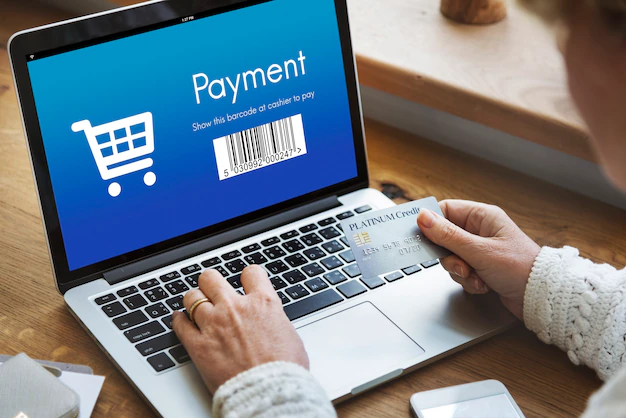Enabling Online Payments On An E-commerce Website: 4 Security Tips

The e-commerce industry across the world is growing at an exponential rate. After all, with each passing day, more and more people are buying everything, from household items to cars, online. The stakeholders are aiming to ensure payment via the e-commerce website.
According to Research and Markets, the value of the global e-commerce market stands at $16.6 trillion in 2022. Stakeholders expect the markets to reach a value of $70.9 trillion by 2028.
Most modern-day e-commerce websites integrate online payment systems for their customers. Such systems, although convenient for customers, often put them and their money at risk. The fear of misappropriating the funds is quite high.
As reported by Statista, losses of the e-Commerce to the frauds in online payment were estimated at around forty one dollars in the year 2022.
Thus comes the need to implement necessary security measures to protect your and your customers’ money. Therefore, if you’re enabling online payment on your e-commerce website, here are a few security tips to consider.
#1 Adopt The Latest Encryption Technologies
Encryption is a security measure that works by encoding sensitive data including credit card numbers and personal information. Due to such encryption, the data becomes unreadable to unauthorized parties.
SSL and TLS protocols are some of the most popular encryption standards that a lot of modern e-commerce websites use. They ensure that your website employs the latest versions of these protocols is imperative for maintaining a secure online environment.
Regularly updating your encryption protocols is crucial, as cyber threats are continually evolving. Cybercriminals are adept at exploiting vulnerabilities in outdated encryption methods, making it essential to stay ahead in the encryption arms race. By consistently adopting the latest technologies, you fortify your website against potential breaches and reassure customers that their data is in safe hands.
#2 Regularly Update And Patch Your System
Cybersecurity is an ongoing battle, with hackers constantly probing for weaknesses in systems. Regularly updating and patching your e-commerce platform is essential to fortify your defenses against emerging threats. Software providers release updates and patches to address vulnerabilities and improve system security.
Failing to update your system promptly can expose it to potential exploits that cybercriminals can leverage to gain unauthorized access. Regular monitoring and prompt installation of security updates help ensure that your online payment infrastructure arms itself with the latest protections. This reduces the likelihood of successful attacks and enhances the overall security posture of your e-commerce website.
#3 Protecting Against Chargebacks
A chargeback occurs when one receives a payment via a customer’s debit card or credit card. Chargebacks take place if customers dispute transactions. For instance, a customer might claim credit card fraud or identity theft after one of their online purchases. However, the transaction was legit; the customer is trying to commit fraud here by denying the legitimacy of the transaction. Here, friendly fraud chargebacks will take place.
According to Ethoca, the best way to deal with fraudulent chargebacks is to set up a solid chargeback-prevention strategy. That means updating your refund policies and providing additional purchase details to the customers up front.
Also, it’s important to keep track of incoming disputes in real-time. These strategies will work for friendly fraud chargebacks as well as other types of chargebacks.
Card-not-present – CNP fraud chargebacks can also be prevented with the proper dispute tracking strategies in place. Credit card companies often receive complaints that a card was used for an online purchase without authorization.
However, a card-not-present transaction is possible in an online purchase. The seller receives the card physically. When someone tries to dispute such a purchase, they’re committing CNP fraud.
With an anti-CNP fraud chargeback strategy, it’s possible to reduce these chargebacks as well. Integrated systems to resolve customer disputes right after transactions are key here. You also need to keep track of customer purchase data to prove the legitimacy of the purchase when there is a claim on chargeback.
#4 Conduct Regular Security Audits
Proactive security measures are crucial in the ever-changing landscape of cyber threats. Conducting regular security audits on your e-commerce website helps identify potential vulnerabilities and weaknesses in your system.
Security audits involve thorough examinations of your website’s code, server configurations, and overall infrastructure. This process helps uncover and address any potential weaknesses that could be exploited by cybercriminals.
In a recent Cisco study, 94 percent of organizations said that their customers wouldn’t buy from them if proper customer data protection wasn’t ensured.
Regular audits also demonstrate your commitment to security, reassuring both customers and stakeholders that you prioritize the protection of sensitive information.
In conclusion, enabling online payments on your e-commerce website is a critical step in staying competitive in the digital marketplace. However, it comes with the responsibility of safeguarding sensitive information and ensuring the security of transactions. By keeping these tips in mind, you can create a robust defense against potential cyber threats.
Read Also:


























Leave A Reply